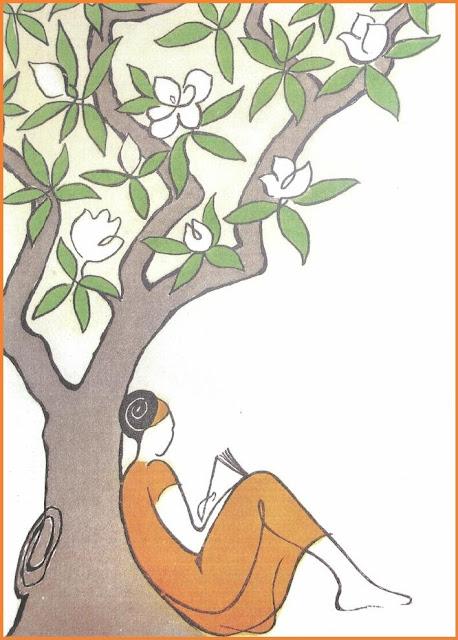When it comes to interior decor, and in particular painted walls, I'm told that fifty shades of gray are 'in' at the moment. Trade names like "elephant's breath", "polished pebble", "stonington", "goose down", "rock salt" and "cloudburst" are leading the way to greyness. I don't have any painted walls, they're all papered, but if I did I wouldn't choose grey! It seems to be achieving the ubiquity that was once the preserve of the mighty magnolia.
Ah, magnolia. From its introduction as a paint color in the 1950s, its inoffensively pleasing neutral tone of cream with a hint of pink has proved the surprising long-stayer. It really came into its own in the 1980s and 1990s almost as a reaction to the sensory overload of the previous decade and a half (all those purple and reds, oranges and chocolate browns, electric blues and lime greens - I know I was guilty). Millions of gallons of it have been brushed or rollered onto the walls and ceilings of new-build houses and flats, for-sale conversions, offices, student halls, social housing projects and dingy bedsits as a kind of default setting, a blank canvas against which any sort of furnishings would not look out of place.
For twenty years it seemed magnolia was everywhere. It reigned supreme. (There was even a movie, not to mention a raft of songs.) Its success was partly to blame for the contempt in which it came to be held by many in the interior design world in the 21st century and yet it hangs on in there, on the paint charts and the shelves of DIY stores in defiance of the fad for gray. A few cowardly paint companies have retained the color but renamed it 'pampas' or 'buttermilk' so as not to offend, while the likes of Crown and Dulux hold firm, and one fairly recent arrival, specialising in 'eco paints' is fueling the resurgence with its bold "retro 50s magnolia" offering.
Wikipedia is interesting on the subject of magnolia - the plant for which the paint is named - after warning that it is not to be confused with Mongolia (a possibility that hadn't occurred to me). So called after the French botanist Pierre Magnol, it is an ancient genus of flowering trees dating back at least 95 million years, before the emergence of bees, when it would have been pollinated by beetles, hence its extremely tough carpels. It is indigenous to South-East Asia and North America, what we would term a disjunct distribution, but possibly an indication that the two continents were a single land mass in the distant past. Or course nowadays magnolias - and there are over 300 different varieties - are found all over the world. I have a fine specimen growing in my front garden, though its flowers are purple and not cream with a hint of pink. The first flowers appear in April before the leaves open, and if I'm lucky, the tree will flower twice more during the year. I love the shade it affords and the scent.

'Magnolia Tree' by Paula Cox
Many girls have been named Magnolia, not that I've ever met any, though I imagine the figure sitting quietly reading in the illustration above could be one such. And the wonderful J J Cale penned a song to another, as you can hear by clicking on the this link: MagnoliaI leave you at the end of a noisy afternoon in the jewel of the north (it has been day one of the annual Blackpool air show) with this latest poem from the imaginarium.The Night MessengerSubtle fragrance of moonlit magnolianot as sweet as jasmine nor sour as earthpenetrates this midnight hourand the birth of dreams.
Orchestrating Hermes often liveliest of Olympiansstands shadowy nowat the doorpost to sleepkindly conducting we drowsy mortalsthrough the portal to landsrich in our imaginings.
A scented breeze fluttersbetween bedroom shutterscools a sleeping facestirs thoughts of a smilebits of twig in your hairgrass stains on your dresscream with a hint of pink.
I read your eyes.It always begins like this.

Thanks for reading, S ;-)
Email ThisBlogThis!Share to TwitterShare to Facebook
